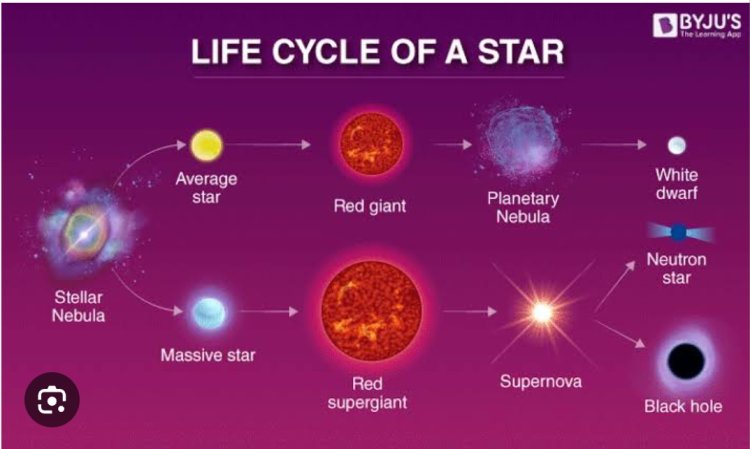The birth story of a star
It's absolutely fascinating how stars aren't just there,but actually go through multiple stages a process of birth and development,They certainly have specific steps to become a star,a journey that can take millions of years

The birth story of a star.
From cosmic cloud to celestial park.
The universe is vast and filled with countless stars, each seemingly an eternal point of light. Yet, every star, including our own Sun, has a beginning – a complex, multi-stage birth process that unfolds over millions of years. Far from being spontaneously generated, stars follow a fascinating series of cosmic "steps" to ignite and shine.
Step 1: The Stellar Nursery – Giant Molecular Clouds
The journey of a star begins in the most expansive and coldest regions of space:giant molecular cloud. These colossal nebulae, often hundreds of light-years across, are the universe's ultimate "stellar nurseries." Composed primarily of cold hydrogen and helium gas, along with trace amounts of dust, these clouds are surprisingly dense compared to the vast emptiness of interstellar space, providing the raw material for future stars.
Step 2: Gravitational Collapse and Fragmentation
Within these immense molecular clouds, subtle variations in density exist. External forces, such as shockwaves from a nearby supernova explosion, the gravitational pull of other stars, or even turbulent eddies within the cloud itself, can cause these denser pockets to begin collapsing under their own immense gravity. As a vast cloud collapses, it often breaks apart into smaller, more manageable clumps. Each of these fragments holds the potential to become one or even multiple stars.
Step 3: The Protostar Emerges
As a gas and dust clump continues its gravitational collapse, the material at its center becomes incredibly dense and starts to heat up due to the conversion of gravitational energy into thermal energy. This rapidly contracting, glowing core is what astronomers call a protostar. It's a "baby star" but not yet a true star because the nuclear fusion reaction that powers stars hasn't begun in its core. During this phase, the protostar continues to draw in more matter from the surrounding cloud, growing in mass, and often expels powerful jets of material from its poles, which help regulate its rotation. A swirling disk of leftover material, known as a protoplanetary disk, also forms around it – the birthplace of planets.
Step 4: The pre-Main-Sequence Phase (e.g., T-Tauri Stars)
For stars like our Sun, the protostar transitions into what's known as a pre-main-sequence star(often exemplified by T-Tauri stars). While still contracting, these objects are becoming more stable. They shine primarily from the heat generated by their ongoing gravitational collapse, as the core isn't yet hot or dense enough to sustain significant nuclear fusion. Strong stellar winds are common during this stage, clearing away much of the remaining gas and dust from around the burgeoning star.
Step 5: Ignition – The Main Sequence Star
This is the moment of true stellar birth. As the pre-main-sequence star continues to contract, the temperature and pressure in its core climb to extraordinary levels, reaching tens of millions of degrees Celsius. At this critical point, the intense conditions finally trigger nuclear fusion Hydrogen atoms in the core begin to fuse into helium, releasing an immense burst of energy. This outward pressure generated by fusion precisely counteracts the inward pull of gravity, bringing the star into a state of stable equilibrium. At this moment, the star officially begins its life as a main-sequence star, entering the longest and most stable phase of its existence. Our Sun is currently a main-sequence star, having been so for about 4.6 billion years and expected to remain so for another 5 billion.
The Ever-Changing Cosmos
The formation of a star is a breathtaking cosmic ballet driven by gravity, pressure, and the fundamental forces of the universe. From cold, diffuse clouds to the fiery furnaces of main-sequence stars, this intricate process showcases the dynamic and ever-evolving nature of our cosmos, continually giving birth to the celestial lights that illuminate our galaxy.












